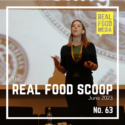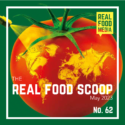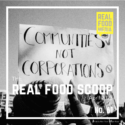Tell us about how you got your start as a food author and educator?
Becoming a food author and educator was kind of like going into the family business: My mother, Frances Moore Lappé, wrote her 3.5-million copy bestselling book, Diet for a Small Planet, more than 40 years ago when she was 26 and has been a leading voice in addressing the root causes of hunger ever since. I never thought this would be my career, though. In fact, I had graduated from Brown and was getting a masters at Columbia on a path to work in public education and economic development, when I leapt at the chance to help my mom write a sequel to Diet. The process ultimately led to my first book, Hope’s Edge, and a journey around the world with my mother that sparked a lifelong passion for promoting food justice, sustainable food systems and a world where everyone everywhere has access to life-supporting foods.
How do you define good food?
Good food is healthy; it supports local economies; it’s raised in ways that promote environmental sustainability, biodiversity and animal welfare alongside worker well being. Not so coincidentally these are the five values at the heart of the Good Food Purchasing Policy, which I am working to help expand from the city of Los Angeles… to the rest of the country!
We just launched our second #NoFoodWaste campaign. What are some #NoFoodWaste practices that you incorporate into your daily life?
On a weekly basis, I try to make “dinners from the back of the fridge,” incorporating leftovers or wilting produce into some delicious dish. Luckily, there are countless ways to do so: revive old veggies in a pot of risotto; make a fresh stock with old onions; cook a soup with yesterday’s broccoli. The list goes on. In addition, we try as much as possible to cook from whole foods: packaging is one of the biggest forms of “food” waste we can kick out of our home.
Your book Diet For A Hot Planet addresses the climate crisis in relation to our food system. What’s one aspect of our diet that really needs to change?
By “our” if you mean the average American, the one aspect of our diet that could stand to change—and it would be a boon to both our waistline and the environment—is the amount of meat and dairy we consume. Americans consume three times more meat and dairy than the global average, with over half of that coming from red meat. (Check out this white paper from the Culinary Institute of America and their new project called The Protein Flip.) From the environmental impact of industrial meat production to the inhumane treatment of the workers in the industry, there are countless reasons to reduce our consumption. Thankfully, there is a growing market of sustainably produced meat and dairy, so consumers can choose, should they want to, less but better meat.
Find the rest of this interview in the Behind the Plate series by Foodstand.
Photo by Paige Green




